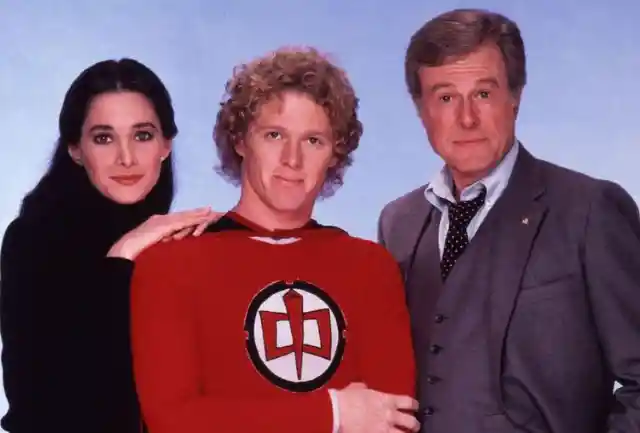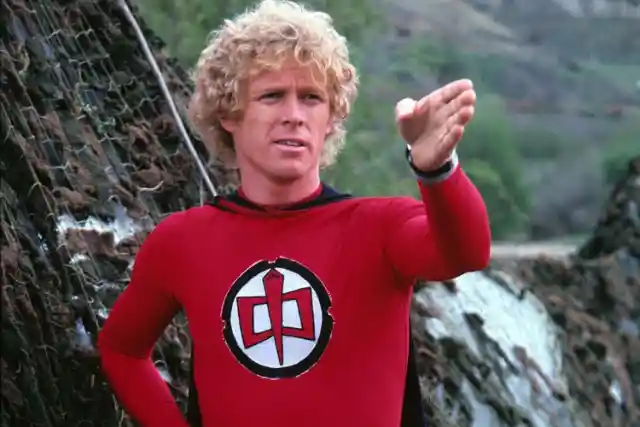The Superhero Reimagined
It was 1981, and American TV viewers were eager to accept a new kind of superhero. One that they could easily relate to. One that wasn’t absolutely perfect. One that didn’t have innate powers that made him special, but that put on a suit that suddenly, wonderfully, made him different. And maybe even kinder.


The Greatest American Hero, which aired from 1981 to 1983, mixed action and comedy while gently poking fun at the superhero genre. Although series creator Stephen J. Cannell originally thought the series should focus on realistic, everyday problems, ABC management insisted on more heroic storylines that would give the show a somewhat childlike quality. In the end, all parties reached an agreement that the show should depict an ordinary man who unexpectedly found himself living the life of a superhero.
The two-hour pilot episode of The Greatest American Hero premiered on March 18, 1981. The premise revolved around Ralph Hinkley, played by actor William Katt, an earnest high school teacher who takes a class of remedial education students on a field trip. During the trip, he encounters FBI Special Agent Bill Maxwell (Robert Culp).
Hinkley and Maxwell are visited by aliens who present Hinkley with a red suit that provides him with superhuman powers. The aliens inform him that he should use his newfound powers to fight injustice and crime and that Maxwell will be his partner in this challenging endeavor.
The Casting Wasn’t A Katt-astrophe


William Katt began his acting career in summer stock, and eventually accepted a role in the movie Carrie (1976). In 1977, he landed the title role in Pippin and later was offered the part of Ralph Hinkley in The Greatest American Hero — without an audition. Although he wasn’t eager to act in television, he found the script funny and decided to take on the role of the antihero hero.
Just like the character of the show, Katt wasn’t particularly comfortable wearing the suit that the costume designers created for him. Even after several modifications were made to the suit, Katt remained uncomfortable wearing the form-fitting costume; consequently, the filming schedule was rearranged so that he didn’t have to be in costume for prolonged periods of time.
As events would have it, Katt’s character’s name was changed from Hinkley to Hanley in reaction to the attempted assassination of Ronald Reagan by John Hinkley, Jr. During the second season, however, the superhero’s name was changed back to Hinkley.
Flying Solo


Hinkley first learns to fly on his trip to court for his divorce hearing. Aware that he’s running late, the superhero stops at a gas station bathroom, changes into the suit, and begins to discover some of his superpowers. Because he’s new to flying, a child needs to advise him as to how to get off the ground. After crashing into a wall, Hinkley is taken to a hospital where he realizes he has the power to see events taking place elsewhere.
Unfortunately, Hinkley early on loses the instruction manual that came with the suit, so he’s forced to learn the extent of his powers by himself, bit by bit. Throughout the series, it’s revealed that the suit imparts everything from super-strength to physical invulnerability to invisibility. Hinkley also comes to learn that he can blow out large fires or resist fire, use a hologram to control a dog, communicate telepathically with animals, shrink his size, and connect with the supernatural.
The Theme Song Was Catchy, The Show Was Canceled


The Greatest American Hero was never a solid hit for the ABC network; every year, the show’s ratings continued to decline. The final episode of the series aired on February 3, 1983, at which time the world became aware of the superhero’s identity. As part of that same episode, aliens told Hinkley to choose a replacement – and he surprisingly chose a female.
The show’s theme song, “Believe It Or Not,” written by Mike Post, enjoyed considerably more success than the series: It peaked at No. 2 on the Billboard Hot 100.